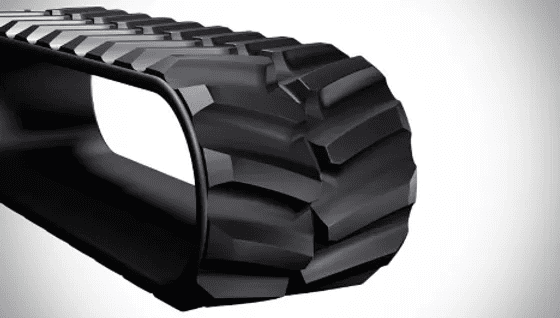- Home
- Our Products
- Under Carriage & G.E.T.
- Rubber Track

Description
Rubber tracks are vital components used in various types of construction and agricultural machinery to provide enhanced traction, stability, and mobility on a range of surfaces. Unlike traditional metal tracks, rubber tracks are designed with a flexible and durable rubber tread that offers several advantages, including reduced ground disturbance, lower noise levels, and improved ride comfort. These tracks are commonly used on equipment such as excavators, skid-steer loaders, and mini diggers, where they help distribute the machine’s weight more evenly and improve grip on uneven or soft terrain. Rubber tracks are engineered with high-strength materials and reinforced with steel cables or fabric layers to ensure durability and resistance to wear, punctures, and tears. Regular maintenance, including checking for wear and proper tension, is essential to maximize the lifespan and performance of rubber tracks. By providing a smoother ride and better traction, rubber tracks contribute significantly to the efficiency and effectiveness of various machinery in diverse working conditions.
Industry Used
FAQ
Rubber tracks are used on heavy equipment, such as mini excavators, skid steer loaders, compact track loaders, and agricultural machinery, to provide better traction, stability, and reduced ground pressure. They are ideal for use on soft, delicate, or uneven terrain.
Rubber tracks offer several advantages, including reduced ground damage, quieter operation, better traction on soft or uneven surfaces, and less vibration, which improves operator comfort. They are also lighter and easier to install compared to steel tracks.
Consider factors such as the size and model of your equipment, the type of terrain it will be used on, the required load capacity, and the specific application. Our team can help you select the right rubber track based on your needs.
Rubber tracks are typically made from high-quality natural or synthetic rubber compounds, reinforced with layers of steel or fabric cords to provide durability, flexibility, and resistance to wear and tear.
Regular maintenance includes cleaning tracks to remove debris, inspecting for cuts or tears, checking tension and alignment, and avoiding sharp turns or excessive speeds. Proper maintenance practices help extend the lifespan and performance of rubber tracks.
Factors affecting wear include operating conditions (such as rough or abrasive terrain), improper tension, overloading, frequent sharp turns, and exposure to harsh chemicals or extreme temperatures. Regular inspections and correct usage can help reduce wear.
Minor cuts or tears in rubber tracks can sometimes be repaired with specialized patches or adhesives. However, significant damage or deep cuts may require track replacement. Contact our service team to assess the extent of the damage and discuss repair options.
Proper installation involves lifting the equipment, removing the old tracks, cleaning the undercarriage, and fitting the new tracks while ensuring proper alignment and tension. Follow the manufacturer’s instructions or consult a professional for correct installation.
Rubber tracks are commonly used in construction, landscaping, agriculture, and road maintenance. They are ideal for tasks requiring mobility on soft, delicate, or varied terrain, such as digging, grading, material handling, and ground leveling.
Signs that rubber tracks need replacement include significant wear, deep cuts or tears, exposed steel cords, loss of traction, or visible cracks. Regular inspections help identify when tracks have reached the end of their service life.

